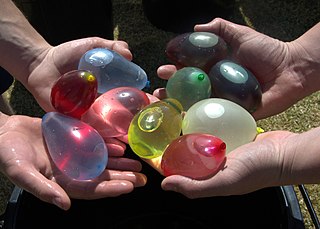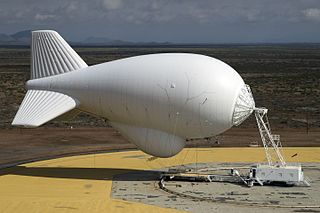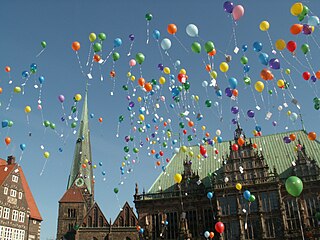
An electric current is a flow of charged particles, such as electrons or ions, moving through an electrical conductor or space. It is defined as the net rate of flow of electric charge through a surface. The moving particles are called charge carriers, which may be one of several types of particles, depending on the conductor. In electric circuits the charge carriers are often electrons moving through a wire. In semiconductors they can be electrons or holes. In an electrolyte the charge carriers are ions, while in plasma, an ionized gas, they are ions and electrons.

Metallic bonding is a type of chemical bonding that arises from the electrostatic attractive force between conduction electrons and positively charged metal ions. It may be described as the sharing of free electrons among a structure of positively charged ions (cations). Metallic bonding accounts for many physical properties of metals, such as strength, ductility, thermal and electrical resistivity and conductivity, opacity, and lustre.

BoPET is a polyester film made from stretched polyethylene terephthalate (PET) and is used for its high tensile strength, chemical and dimensional stability, transparency, reflectivity, gas and aroma barrier properties, and electrical insulation. A variety of companies manufacture boPET and other polyester films under different brand names. In the UK and US, the best-known trade names are Mylar, Melinex, Lumirror and Hostaphan.

A water balloon or water bomb is a balloon, often made of latex rubber, filled with water. Water balloons are used in a summer pastime of cooling off through water balloon fights. Water balloons are also popular for celebrations, including celebrating Holi and Carnival in India, Nepal, and several other countries.

An aerostat is a lighter-than-air aircraft that gains its lift through the use of a buoyant gas. Aerostats include unpowered balloons and powered airships. A balloon may be free-flying or tethered. The average density of the craft is lower than the density of atmospheric air, because its main component is one or more gasbags, a lightweight skin containing a lifting gas to provide buoyancy, to which other components such as a gondola containing equipment or people are attached. Especially with airships, the gasbags are often protected by an outer envelope.

In aeronautics, a balloon is an unpowered aerostat, which remains aloft or floats due to its buoyancy. A balloon may be free, moving with the wind, or tethered to a fixed point. It is distinct from an airship, which is a powered aerostat that can propel itself through the air in a controlled manner.

A plasma ball, plasma globe, or plasma lamp is a clear glass container filled with noble gases, usually a mixture of neon, krypton, and xenon, that has a high-voltage electrode in the center of the container. When voltage is applied, a plasma is formed within the container. Plasma filaments extend from the inner electrode to the outer glass insulator, giving the appearance of multiple constant beams of colored light. Plasma balls were popular as novelty items in the 1980s.

A gas balloon is a balloon that rises and floats in the air because it is filled with a gas lighter than air. When not in flight, it is tethered to prevent it from flying away and is sealed at the bottom to prevent the escape of gas. A gas balloon may also be called a Charlière for its inventor, the Frenchman Jacques Charles. Today, familiar gas balloons include large blimps and small latex party balloons. For nearly 200 years, well into the 20th century, manned balloon flight utilized gas balloons before hot-air balloons became dominant. Without power, heat or fuel, untethered flights of gas balloons depended on the skill of the pilot. Gas balloons have greater lift for a given volume, so they do not need to be so large, and they can stay up for much longer than hot air balloons.

A power cable is an electrical cable, an assembly of one or more electrical conductors, usually held together with an overall sheath. The assembly is used for transmission of electrical power. Power cables may be installed as permanent wiring within buildings, buried in the ground, run overhead, or exposed. Power cables that are bundled inside thermoplastic sheathing and that are intended to be run inside a building are known as NM-B.

A toy balloon or party balloon is a small balloon mostly used for decoration, advertising and children's toys. Toy balloons are usually made of rubber or aluminized plastic, and inflated with air or helium. They come in a great variety of sizes and shapes, but are most commonly 10 to 30 centimetres in diameter. Toy balloons are not considered to include "sky lanterns", although these too are or were used as child toys in some parts of the world.

An airborne wind turbine is a design concept for a wind turbine with a rotor supported in the air without a tower, thus benefiting from the higher velocity and persistence of wind at high altitudes, while avoiding the expense of tower construction, or the need for slip rings or yaw mechanism. An electrical generator may be on the ground or airborne. Challenges include safely suspending and maintaining turbines hundreds of meters off the ground in high winds and storms, transferring the harvested and/or generated power back to earth, and interference with aviation.

Jack Alan Scott is an American educator and former Democratic politician. Currently, a scholar in residence at Claremont Graduate University, Scott earlier served as president at two California community colleges, member of the California State Assembly and California State Senate and Chancellor of the California Community Colleges System.
Metallised films are polymer films coated with a thin layer of metal, usually aluminium. They offer the glossy metallic appearance of an aluminium foil at a reduced weight and cost. Metallised films are widely used for decorative purposes and food packaging, and also for specialty applications including insulation and electronics.

Nancy Skinner is an American politician and a member of the California State Senate. A Democrat, she represents California's 9th State Senatorial district, encompassing parts of the East Bay.
A lifting gas or lighter-than-air gas is a gas that has a density lower than normal atmospheric gases and rises above them as a result. It is required for aerostats to create buoyancy, particularly in lighter-than-air aircraft, which include free balloons, moored balloons, and airships. Only certain lighter than air gases are suitable as lifting gases. Dry air has a density of about 1.29 g/L at standard conditions for temperature and pressure (STP) and an average molecular mass of 28.97 g/mol, and so lighter-than-air gases have a density lower than this.

A balloon release is a ceremonial event in which a number of hydrogen- or helium-filled balloons are launched into the sky. Balloon releases can be done as a prayer ceremony, to create a photo opportunity, to raise awareness of a cause or campaign, or as a competitive long-distance race.

A balloon is a flexible bag that can be inflated with a gas, such as helium, hydrogen, nitrous oxide, oxygen, and air. For special tasks, balloons can be filled with smoke, liquid water, granular media, or light sources. Modern day balloons are made from materials such as rubber, latex, polychloroprene, or a nylon fabric, and can come in many different colors. Some early balloons were made of dried animal bladders, such as the pig bladder. Some balloons are used for decorative purposes or entertaining purposes, while others are used for practical purposes such as meteorology, medical treatment, military defense, or transportation. A balloon's properties, including its low density and low cost, have led to a wide range of applications.

Charles Jeffrey Schwertner is an American orthopedic surgeon and politician from Georgetown, Texas. He has served in the Texas State Senate since November 6, 2012, after having represented House District 20 in the Texas House of Representatives for a single term beginning in January 2011. He is a Republican.

An electrical conduit is a tube used to protect and route electrical wiring in a building or structure. Electrical conduit may be made of metal, plastic, fiber, or fired clay. Most conduit is rigid, but flexible conduit is used for some purposes.

Arnold Schwarzenegger was an early opponent of same-sex marriage in the United States, including during his Governorship of California. As an elected official he opposed legal recognition of same-sex marriage but otherwise he supported LGBT rights legislation, including civil unions.


















